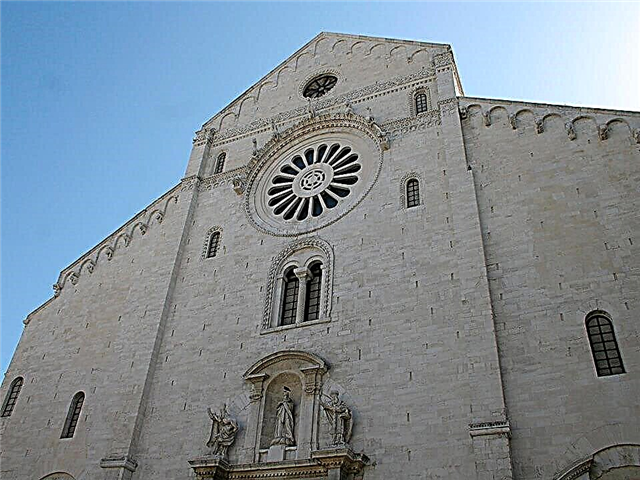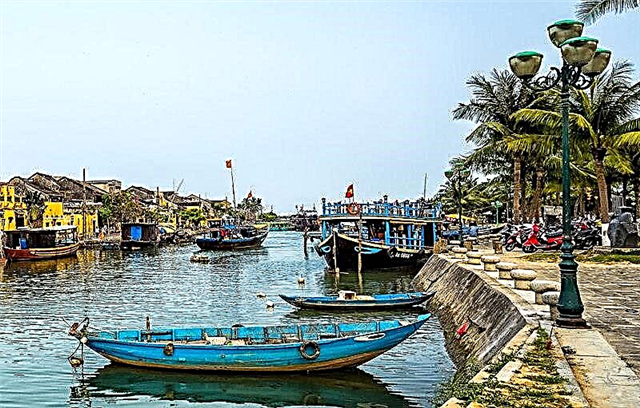Address: Russia, St. Petersburg, Lensoveta street
Building: 1777 - 1780
Project author: Yuri Matveevich Felten
Coordinates: 59 ° 51'24.9 "N 30 ° 19'51.5" E
Object of cultural heritage of the peoples of the Russian Federation
Content:
According to legend, an unusual temple was built on the place where Empress Catherine II received news of the victory of Russian ships in the Aegean Sea. Nowadays, a small beautiful church never ceases to delight lovers of architecture and history. It has been well restored, has the status of an architectural monument of federal significance and receives pilgrims and tourists every day.

General view of the Chesme Church
Temple history
The most famous cathedrals and temples of St. Petersburg were built in the 18th century. The Chesme Church is no exception. The area where it stands was a swampy plain, and it was called "frog swamp", in Finnish - "Kikeriki". After the end of the Northern War, the forested lowland ceded to Russia, and then a road was laid through it to Tsarskoe Selo.
In June 1770, Catherine II was on her way to her summer residence. At the seventh verst of the Tsarskoye Selo tract, a messenger caught up with her and conveyed the news of the long-awaited victory of the Russian fleet in the Chesme Bay. The Empress wished to celebrate an important event and ordered to build a Travel Palace for rest near the road to Tsarskoe Selo.
The Empress received the project of a new palace for Yuri Matveyevich Felten to prepare. The talented architect was educated in Germany and helped Francesco Rastrelli build the Winter Palace. Felten approached the matter creatively and designed a unique palace ensemble in the pseudo-Gothic traditions unusual for Russia.

View of the Chesme Church from Lensovet Street
The Chesme Church was founded in 1777. Empress Catherine II invited her entire court and the King of Sweden Gustav III to the solemn event. With this act, she wanted to remind her northern neighbor of the power of the Russian army.
In 1780, on the 10th anniversary of the famous Battle of Chesme, a new church was consecrated in honor of the Nativity of John the Baptist. The ceremony was conducted by Archbishop Gabriel of St. Petersburg and Revel.
The delighted Catherine II invited the Holy Roman Emperor Joseph II to the feast. For political reasons, the official visit of such a distinguished person to St. Petersburg and the presence of Joseph II at the consecration of an Orthodox church were considered inappropriate. The Emperor was "encrypted" as much as possible, and he was listed on the guest list as "Count Falkenstein." Since that time, the church and the palace began to be called "Chesme".
Soon after the opening, the new temple was attributed to the court department. The church became the capitular church of the highest military award of Russia - the Order of St. George the Victorious. For a while, the residents of St. Petersburg called her "Georgievskaya".

The Empress often visited the Traveling Palace and celebrated the feast day in the palace church. A royal place was specially arranged for her, where Catherine II prayed during a church service.
In 1796, when the empress died, Paul I became the new owner of the palace complex. The young emperor did not like everything connected with Catherine II and preferred to live in Gatchina. By his order, the palace and the temple were intended to be converted into an almshouse for the Order of Malta, but for some reason they did not.
The church was cold. In order to be able to hold services in the winter months, a new heated Church of the Nativity of Christ was built in the palace at the beginning of the 19th century.
The Chesme church had harmonious proportions and made a strong impression on the architects, so two similar "Moorish" temples were built in Russia. Intricate neo-Gothic replicas were located in the village of Posadnikovo in the Pskov region and the village of Krasnoye in the Tver province. Fortunately, the temple under Staritsa in Krasnoye has survived to this day.

View of the Chesme Church from the Chesme Military Memorial Cemetery
In the summer of 1919, the Chesme Church was closed. Believers were forced to gather for church services at a private dacha located on the Moscow highway. Meanwhile, inside the church and on the territory of the palace, the country's first forced labor camp for the enemies of Soviet power was organized. The new owners removed the bells from the belfry and sent them to be melted down. The place of the cross on the dome was taken by a sculpture that depicted an anvil, pincers and a hammer.
The Chesmenka concentration camp received prisoners until 1924. Then the archive of Glavnauka was placed here, and after that the premises were converted into carpentry workshops owned by the Automobile Institute. In the early 1930s, a massive fire broke out in the church. The raging fire destroyed the unique interiors and the carved iconostasis.
The damaged building was given over to warehouses. During the war years, it was destroyed even more, but the monument of military glory was not demolished. In the 1960s, large-scale restoration work was carried out in the church, which was led by the architect A.P. Kulikov. The restorers have strengthened the dilapidated stone walls, repaired the old domes, and restored all the lost fragments and interiors.

Church domes
New bells were cast for the revived church. In 1977, it received the status of a branch of the Naval Museum. Inside, an exposition dedicated to the famous Chesme battle was decorated. The temple was returned to the believers in the early 1990s.
Architectural features
The one-storey brick building was erected in the form of a "four-leafed" or equal-pointed Greek cross. On four sides, the square is adjoined by annexes - semicircular apses. The main volume is covered with a dome. Whichever side you approach the temple, it looks great.
Elements of medieval Gothic architecture are used in the design of the church. Narrow lancet windows and white vertical rods are visible on the walls. Delicate pink facades are decorated with pointed arches, white stone patterns, tiny turrets and a graceful jagged parapet. On the pediment is a festive bas-relief with three cherubs, diverging rays and the All-Seeing Eye of God.

Interior of the Chesme Church
Five drums are crowned with small domes with spiers and crosses. Above, in the front tower, there are 8 ringing bells. There is a round rose window above the entrance, and on the sides there are two allegorical sculptures "Faith" and "Hope".
Interiors and shrines
The old church is an unusual monument to the power of Russian weapons. Inside, the temple looks very strict and laconic. There is a marble plaque near the entrance with a text about the history of the construction of the church.
In the church there is a newly-made iconostasis, which was restored according to old drawings and drawings made by Yu.M. Felten. Old icons painted by masters from Italy are of great interest.
Military cemetery
To the east of the Chesme Church is a small memorial cemetery. Since 1836, veterans of various wars were buried here, who were treated and lived in the Chesme almshouse. They were participants in the famous military campaigns of Suvorov and Kutuzov, heroes of the Russian-Turkish wars and the Patriotic War with the French in 1912. According to documents, it is known that by the end of the 19th century, about 5,000 people were buried near the temple.

View of the Chesme cemetery against the background of the Chesme church
In the XX century, the cemetery appeared the graves of Russian soldiers who died of wounds during the Russo-Japanese War of 1905-1907, the First World War and the soldiers who defended Leningrad during the Great Patriotic War. Here are five Heroes of the Soviet Union.
Under Soviet rule, the historical cemetery was not monitored, therefore, by the middle of the last century, most of the old graves were lost. In May 2003, a memorial cross was erected at the memorial in honor of all the victims, and then the territory with military graves was landscaped.Today the ancient necropolis welcomes visitors with neat paths and carved stone tombstones, on which there are always flowers.
Useful information for visitors
The old church is a functioning Orthodox church. Services are held there daily. On weekdays and Sundays at 10:00, and on Saturdays at 10:00 and 18:00. A Sunday school, a female vocal ensemble, choirs for adults and children, a family club and an architectural and art workshop are open at the church.

Sculptures "Faith" (left) and "Hope" (right) above the entrance to the Chesme church
How to get there
The temple is located in the Moskovsky district of St. Petersburg, on Lensoveta street, 12. It is easy to reach it on foot from the Moskovskaya metro station in 10 minutes.











